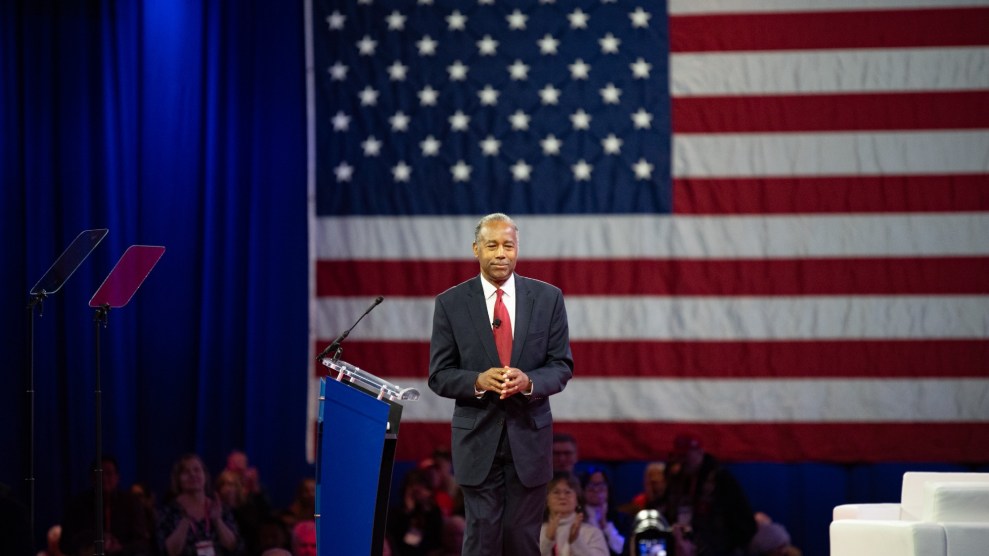Back in 1995, Rep. James Walsh (R-N.Y.) introduced a rider to the Environmental Protection Agency’s funding bill that would have stopped the agency from regulating Bt plants — plants genetically engineered to contain a natural protein from the bacterium Bacillus thuringiensis, which is toxic to some pests. At the height of the GOP revolution, Walsh figured he was on target: Not only did his provision chip away at big government, it removed a regulatory hurdle for the biotechnology industry. Walsh assumed it would appeal to fellow Republicans on the House Appropriations Committee, as well as to Monsanto and biotech industry lobbyists. In fact, the opposite was true.
Contrary to conventional wisdom, Monsanto and other industry giants love EPA regulation. It adds another stamp of approval to their products, and it squeezes out smaller companies that can’t afford the time and money the regulatory process demands. The big firms will spend whatever it takes to topple the competition, and Monsanto’s lobbying is so masterful that once regulation is in place, manipulating the process is a breeze. According to one Appropriations Committee aide, Monsanto lobbyists called Walsh’s office several times a day to complain about the provision, and even threatened to bring environmentalists into the fray: “They told us, ‘If the perception gets out that what you’re doing here is harmful to the environment, the greens will come out.'”
Industry lobbyists say they didn’t single out Walsh — they contacted every other member of the Appropriations Committee as well. By the time the rider reached the full committee, it was attacked by Dick Durbin (D-Ill.). “Durbin intervened on Monsanto’s behalf,” says a congressional aide, who added that all of the committee’s members are friendly to Monsanto. “If we can help, we will. Monsanto can obviously provide you with money for fundraising.” Of course, EPA regulations already favor industry. The Federal Insecticide, Fungicide, and Rodenticide Act (FIFRA) directs the EPA to take the economic impact of a product into consideration during the approval process. Moreover, the agency relies on data and analyses supplied by the very companies it regulates. Because of the time and cost involved, the more strict the data requirements, the harder it is for smaller firms to compete. Henry Miller of the Hoover Institution says that raising the regulatory stakes is a long-standing strategy. “Since the 1980s, Monsanto has had a policy of trying to keep regulatory barriers high so seed companies wouldn’t be comfortable doing the research,” he says.
Monsanto also makes a point of cultivating friends in the EPA. Linda Fisher, who heads Monsanto’s Washington office, used to run the EPA division responsible for regulating plant pesticides. “Fisher knows everybody,” says one EPA staffer. But he adds, “There’s nothing sinister about it. It’s Washington 101.” Kathleen Merrigan, a senior policy analyst for the Henry A. Wallace Institute for Alternative Agriculture, agrees. “Monsanto hires lobbyists to try to get the legislative language it wants. I do the same thing,” Merrigan says. “But there’s such a disparity in resources that my message can’t get out.” Merrigan, who served for five years as a Senate Agriculture Committee staffer, says she’d like to see “an even playing field.”
This desire to even the playing field led scientists and smaller firms to support the Walsh rider freeing Bt from EPA regulations. But, presumably, the EPA’s regulatory jurisdiction protects consumers and preserves valuable pesticides such as the topically sprayed Bt — the effectiveness of which may now be threatened by Bt plants.
For now — as Monsanto’s bottom line influences the EPA’s decision-making process and smaller firms push to weaken the EPA’s regulatory powers — farmers and consumers, according to Jane Rissler, a scientist with the Union of Concerned Scientists, can only “plant and pray.”















